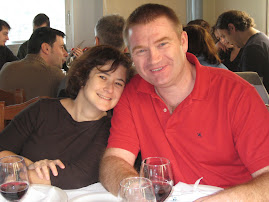Rule 1: never, ever, eat at the Ramblas (this advice extends to drinking there, too). By the Ramblas we mean the boulevard between Plaza Catalunya and the sea, the other Rambla, Rambla Catalunya is, on the contrary, recommended. If you eat/drink there (on Las Ramblas) you will be swindled. If you just walk some meters inside any street each side of Las Ramblas, you'll find much better places. So, go on, be daring - eat well and still have some money in your pocket.
Rule 2: never eat in a restaurant that has to fish for customers in the street, however sweetly they talk to you. Never eat a paella in a restaurant that has a "palleador" sign at the front. In general, restaurants with pictures of the food are for tourists. And as a general rule (with some exceptions) good tapas restaurants never have the word "tapa" in the name (avoid Taller de tapas and similars).
Rule 3: Follow recommendations from your guidebook, in general they are good, and the ones in LonelyPlanet excellent. If the guide recommends to book, it's better to book in advance. It is also advisable to book for Friday and Saturday night. Ask your hotel, they'll be delighted to help. If you are in the street, check if the restaurant has local customers. If it has only tourists, beware. This advice is problematic because... (see next rule).
Rule 4: Spanish crazy eating timetables. Breakfast is from 8-10 (reasonable), but lunch is from 2-4 pm (crazy) and dinner from 9pm, a good hour being 10pm or even later. So, a restaurant is good if full by 3 and 10 pm, not earlier. Also bear in mind that according to Spanish law, restaurants must close one day to give personnel a rest. Many choose either Monday or Sunday, because with locals these are the weakest days for eating out.
Rule 5: Some local specialties that can lead to culture shock... or not
- Salads can be served without dressing, in this case, use the oil, vinegar, salt and pepper that will be present in every table.
- Spain is a country of compulsive fish-eaters. Many species will be unknown to you, if you are unsure, stick to known ones. Local curiosities will be boquerones en vinagre (marinated anchovies), pescadito frito (usually you can eat it whole, spine and head included)... In question of shell-fish, it's even worse (or better, depending on your taste).
- Cod (bacalao), unless advertized as "fresco" (fresh), will be dried, salted and dessalted before cooking. That was necessary before fridges, but now is done just for the taste. It is considered better than the fresh version, as jamon is better than pork chops, but it is a acquired taste. Sometimes is not even cooked, like in Esqueixada (marinated cod salad) or when served in carpaccio.
- Vegetables are plentiful and very good, but Spain is not vegetarian-friendly, and vegan even less. Even in "vegetable" dishes there can be some jamon, or the base for a vegetable soup can be a meat stock.
- Fresh fruit is excelent, but not common as a desert in restaurants, excepting in the form of macedonia (fruit salad). But you can buy it in any grocery or market.
- We have a penchant for infanticide: we like veal, baby goat, baby lamb and even baby squid.
- The casqueria (offal) is still very popular and even making a comeback. Higado encebollado (liver with onions), callos (tripe in sauce), pies de cerdo (pig trotters), carrillera or galta (cheek)...
- Embutidos (sausages, dried or not) are quintessentially Spanish. Sometimes you can ask for "tablas", of cheeses, embutidos and jamon. Large dishes that are meant to be shared.
- Contrary to stereotype, garlic is not widespread. Olive oil, onion and tomato are the real base of local cooking.
Rule 7: tipping is a reward for good service, because service is always included. Usually the change or some euro coins will be ok. With extremely good service, go for 10%. If the service is extremely bad, local people make an statement and leave nothing. Up to you! Also it is uncommon to tip taxi drivers.
Rule 8: if you want names and directions, email us. It's difficult to make a short selection here.

No comments:
Post a Comment